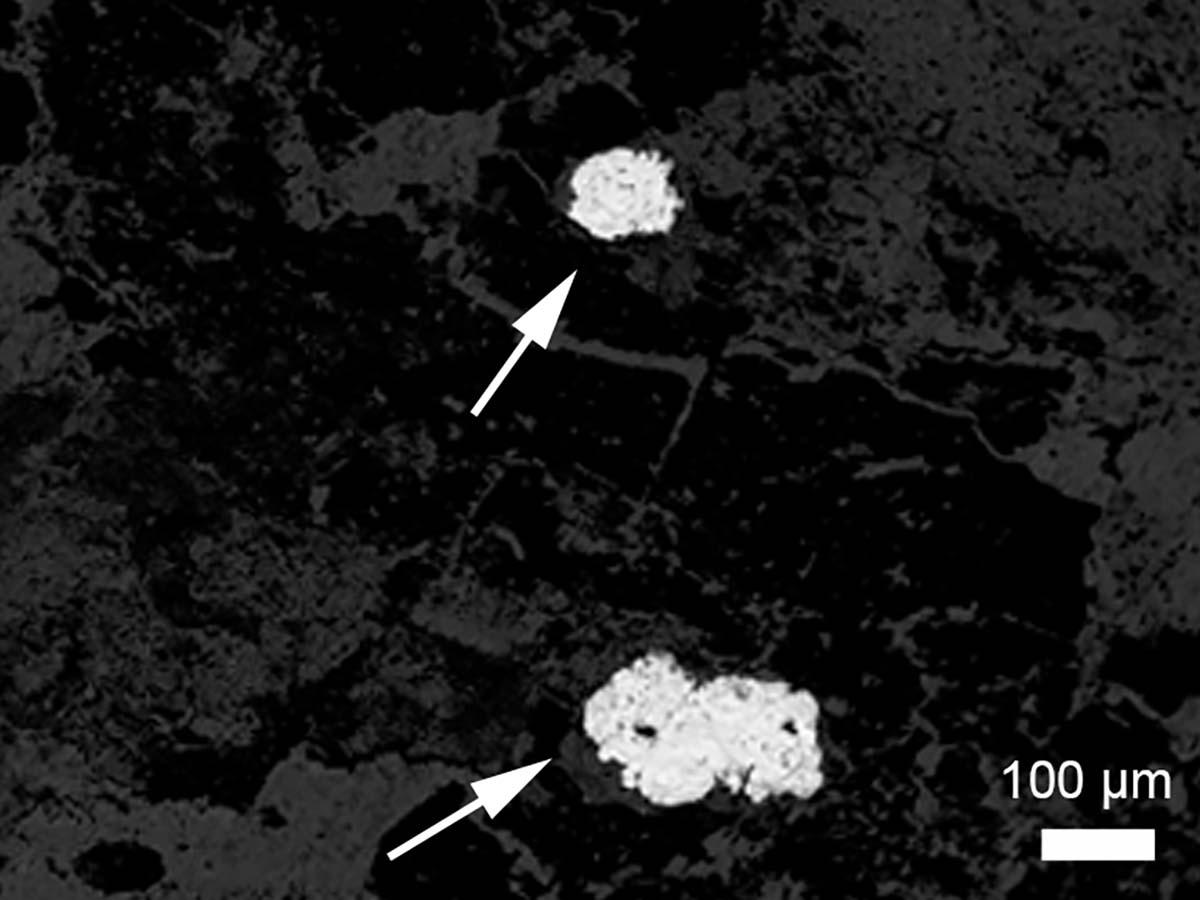Flecks of silver in poop of ancient Cambrian creature baffle scientists
How did metal get into this worm's poop 500 million years ago?
Researchers were baffled when they found shiny specks of silver in fossilized worm poop, because there is no known explanation for how the wiggly creatures could have made it.
The silver specks were found in coprolites, or fossilized feces, that were embedded in a lagerstätte — a deposit of exceptionally preserved fossils that sometimes includes fossilized soft tissues — in the Mackenzie Mountains in Canada. The ancient dung was produced by tiny worms that lived below the seafloor when the region was covered by an ocean during the Cambrian period, between 543 million years to 490 million years ago.
The largest of the silver specks was around 300 micrometers wide (for comparison, a human hair is between 17 and 180 micrometers wide) — sizable for the excrement of such a small creature, according to a statement..
Related: 8 bizarre animal surprises from 'true or poo' — can you tell fact from myth?
The discovery of silver inside coprolites was "very surprising," lead researcher Julien Kimmig, an assistant research professor at the Earth and Environmental Systems Institute at PennState, told Live Science. "It's the first time we've ever seen this."
The researchers were initially confused as to which animal the coprolites belonged to. But after slicing through the rock samples, they came across fossilized worms still in their burrows, which would have been built below the seafloor.
"We got lucky that we found one of the worms still in the burrow," Kimmig said. "While it is not uncommon to find coprolites in the fossil record, it is very rare that we can assign the producer to them."
Get the world’s most fascinating discoveries delivered straight to your inbox.
However, the researchers do not believe the worms were responsible for the silver specks in the poop. The worms would only have been able to obtain the silver from the surrounding seafloor. But after analyzing the surrounding sediment, the researchers found that there were not sufficient concentrations of silver to explain the sizable chunks in the coprolites. Silver was also thought to be toxic to small invertebrates such as worms, but this idea has not been tested properly, according to the statement.
Instead, the culprit is a "microbial colony that likely extracted it out of the water column," Kimmig said. These microbes, most likely bacteria, then deposited the silver inside the worm feces before it fossilized, Kimmig said. This could explain the uniform distribution of the metal throughout the coprolites, he added.
For Kimmig, the most exciting part of the discovery was that microbes have been "mining" metals for so long.
"It is fascinating to see what bacteria can do with metals, and we know that nowadays, they can extract many different ones from mining waste, for example," Kimmig said. "But seeing that this was likely already a well-developed trade over 500 million years ago is just fascinating."
The study was published online earlier this year in the Canadian Journal of Earth Sciences.
Originally published on Live Science.

Harry is a U.K.-based senior staff writer at Live Science. He studied marine biology at the University of Exeter before training to become a journalist. He covers a wide range of topics including space exploration, planetary science, space weather, climate change, animal behavior and paleontology. His recent work on the solar maximum won "best space submission" at the 2024 Aerospace Media Awards and was shortlisted in the "top scoop" category at the NCTJ Awards for Excellence in 2023. He also writes Live Science's weekly Earth from space series.




